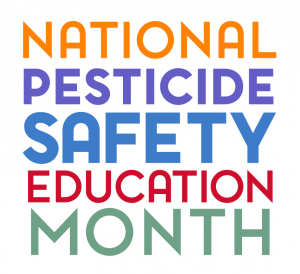February is National Pesticide Safety Awareness Month
Pesticide Safety Awareness
February is National Pesticide Safety Awareness Month. As your thoughts turn to spring planning, you should plan for safety. Using pesticides around your home, garden or business has risks. Reduce those risks by taking the time to learn about pesticide safety.
Read the label.
Reading and following the label is the most important rule to follow for the safe use of a pesticide. “The label is the law” and common sense. First, the label provides the amount of pesticide and location to use it. A common homeowner or novice mistake is to assume that more pesticide is better. An example is a user spraying an aerosol on an insect and expecting it to curl up, flip over and die immediately. Insects that have accumulated a toxic dose of a pesticide often continue to move. If you want an immediate result, just kill the insect by hitting it with the can.
Proper site.
Always use pesticides on the intended site. Injury can occur if materials are put on sites they are not intended to be used on. For example, using a non selective herbicide to control broadleaf weeds in turfgrass will kill the turfgrass as well. Using materials labeled for outdoor use inside is another way pesticides are used on the wrong site. An example is using granules indoors. This use is not only ineffective to control pests but can be dangerous for non targets like people, children and pets. Finally, use up a pesticide at the properly labeled rate on the proper site. Do not throw out excess pesticide in the trash.
Consider EPA reduced risk materials.
When you choose a pesticide to use on any issues you have, consider an EPA reduced risk material. Those materials will have advantages over conventional pesticides. The advantages of a reduced risk material are many. Advantages include low impact on human health, lower toxicity to non-target organisms (birds, fish, plants), low potential for groundwater contamination, low use rates and for efficacy a low pest resistance potential.


